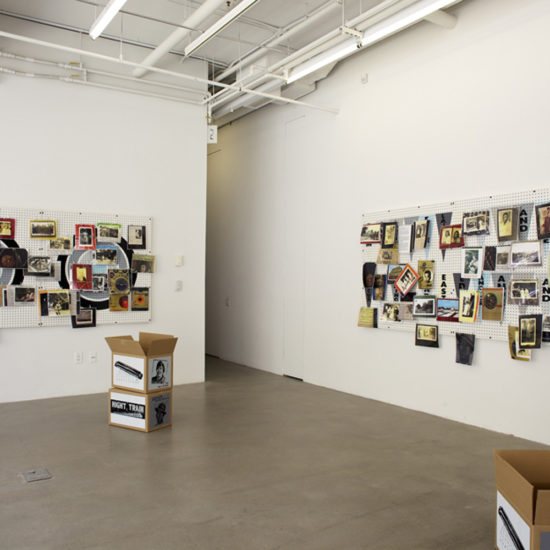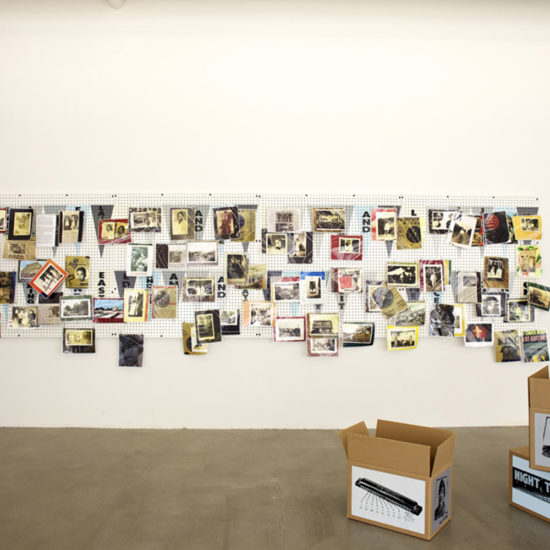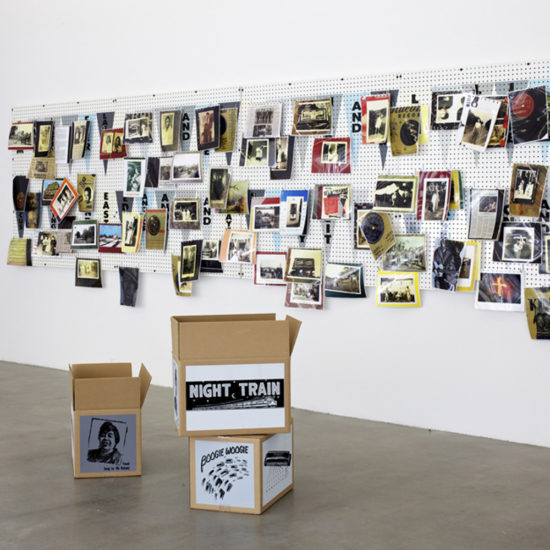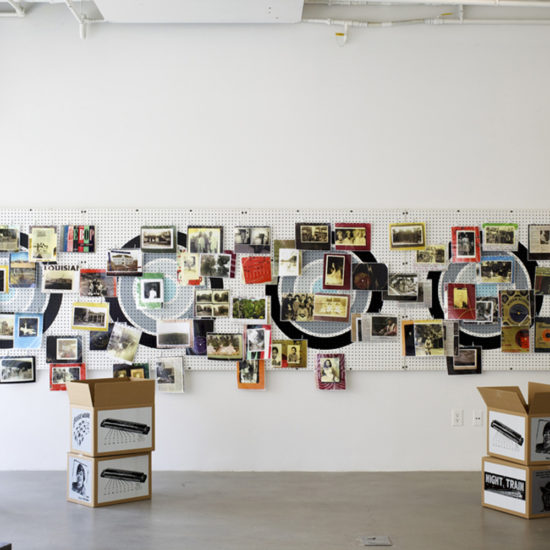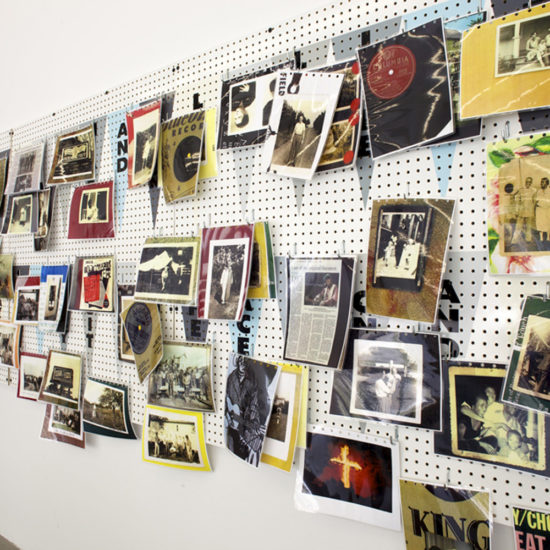In 1969 Allen Ruppersberg opened Al’s Café to customers who entered a seemingly typical North American diner with a menu that was made up of small assemblages, varying from “three rocks with crumpled paper” to “simulated burned pine needles a la Johnny Cash, served with a live fern.” He made orders on the spot per request. Each came with beer and was presented as an item for contemplation and discussion. The café as an artwork in itself, articulating a social space around the way aesthetic objects, shapes and forms are received. This defining work marked Ruppersberg’s embrace of ephemeral material, the aesthetics of community advertising, language, performance and collecting that traverse from the artist’s process to the audience’s action.
Ruppersberg is a collector. “Honey, I Rearranged the Collection” is an announcement the artist put forward as a brightly coloured poster with a gradient background and bold black text, appropriating the aesthetic of event posters most typical to Los Angeles. This multiple is part of The Novel that Writes Itself, a series of text-based posters that cumulatively read as a collection of poetic reflections and dissections of language. The series began in 1978, expanding until the Colby Printing Company where all the posters were produced closed its doors a couple of years ago. Until that point the work in various stages (460 distinct posters by 2013) had been shown in many forms and parts, often as floor to ceiling wallpaper arrangements. In a barrage of coloured backgrounds the enigmatic texts of each individual poster became mere details in an overall image. Its pieces, the posters, were to be arranged and re-arranged, its meaning resting not in a finished overall image, but in the process of compiling fragments into something whole, conveying a message that is never static.
No Time Left To Start Again/The Birth and Death of Rock ‘n’ Roll, presented in part at Plug In ICA,is formed of many adjustable parts, built from Ruppersberg’s immeasurable collection of records, sheet music, magazines, photographs, article clippings and music paraphernalia. This vast array of historical material catalogues various trajectories of North American music from the early 1900s until the early 70s, at a point Ruppersberg sees as a “time rock and roll was becoming something other than its original self.” His vast collection amassed in encyclopedic quantities posits infinite histories of rock n roll, tracing the lines of Gospel music and following the development of Boogie-Woogie, Blue Grass and RnB, to name only a few. This material is divided into five chapters. Each has a unique colour scheme and set of poetic texts, which function as the background for thousands of possible histories to emerge.
Poetry, the section presented at Plug In ICA, draws on a long largely undocumented history of Jazz and Blues, and is left to be mined, arranged and re-arranged by our audiences. This work is contingent on people filing through various boxes containing Ruppersberg’s massive yet select and edited collection. He asks people to re-imagine this history and his own perception of it, inviting them to sift through and present a version that they physically construct and turn into an overall image. On the walls Ruppersberg hangs eight pegboard panels for people to clip their selections. Graphic forms are silk-screened in bright colours across the panels. Some contain a vertical pennant shape that has a word written down it; presented together they form a poem. Others have ringed targets and all are to be used by the audience, who are asked to perform the historian – to conceive a history, whether probable or knowledgeable, that will soon be undone and rewritten.
Internationally celebrated LA-based artist Allen Ruppersberg is a pioneer of American conceptual art. Working in an expanded field, which spans paintings, drawings, installations, sculptures, and artist books, Ruppersberg mines the forms and vocabularies of mass media and popular culture in order to critically dissect them. Ruppersberg’s practice is deeply engaged with language and uses it as a tool to break apart cultural mythologies and narratives. An avid collector, Ruppersberg’s personal archive – made up of newspapers, magazine covers, snapshots, home movies, educational slides, advertising and posters – serves as a regular resource for the artist, who often copies and classifies elements of the archive within his work. Ruppersberg has been included in over 60 solo exhibitions and 200 collective exhibitions since the late 1960s, including the seminal exhibition When Attitudes Become Formpresentedat the Kunsthalle Bern. Recent solo exhibitions of his work have been presented at the Skirball Culture Center, Los Angeles; Greene Naftali, New York; MFC-Michèle Didier, Paris; Wiels, Brussels; and The Art Institute of Chicago, Chicago. His works are included in esteemed collections internationally, including the Guggenheim Museum, New York; Metropolitan Museum of Art, New York; The Museum of Contemporary Art, Los Angeles; and Foundation de Appel, Amsterdam, among others.
Plug In ICA gratefully acknowledges the support of the Canada Council for the Arts, the Manitoba Arts Council and Winnipeg Arts Council. We thank the Andy Warhol Foundation for the Visual Arts for their support of our 2016 and 2017 program, and we extend gratitude to The Winnipeg Foundation and all our generous donors, valued members and dedicated volunteers.
For general inquiries please contact: info@plugin.org
For media inquiries please contact: Sarah Nesbitt at sarah@plugin.org or by phone at (204) 942-1043 ext. 27




